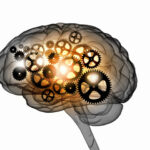What is Generalized Anxiety Disorder (GAD)?
Generalized Anxiety Disorder (or GAD) is characterized by excessive, exaggerated anxiety and worry about everyday life events with no obvious reasons for worry. People with Generalized Anxiety Disorder anticipate disaster and are overly concerned about health issues, money, family problems, or difficulties at work. Sometimes just the thought of getting through the day produces anxiety. When the anxiety level is mild, people with Generalized Anxiety Disorder can function socially and be gainfully employed. In mild cases they may avoid some situations because they have the disorder, but some people can have difficulty carrying out the simplest daily activities when their anxiety is severe. Daily life becomes a constant state of worry, fear, and dread.
What Are the Symptoms of Generalized Anxiety Disorder?
Generalized Anxiety Disorder affects the way a person thinks, but the anxiety can lead to physical symptoms, as well. Symptoms of Generalized Anxiety Disorder can include:
- Nausea
- Sweating
- Tiredness
- Headaches
- Trembling
- Irritability
- Muscle tension
- Being easily startled
- Difficulty concentrating
- An unrealistic view of problems
- Trouble falling or staying asleep
- Excessive, ongoing worry and tension
- Restlessness or a feeling of being “edgy”
- The need to go to the bathroom frequently
How Common Is Generalized Anxiety Disorder?
Generalized Anxiety Disorder affects 6.8 million adults, or 3.1% of the U.S. population, in any given year. Women are twice as likely to be affected than men. It most often begins in childhood or adolescence, but can begin in adulthood.
How Is Generalized Anxiety Disorder Diagnosed?
Generalized Anxiety Disorder is diagnosed when a person worries excessively about a variety of everyday problems for at least 6 months. They can’t relax, startle easily, and have difficulty concentrating. Physical symptoms that often accompany the anxiety include fatigue, headaches, muscle tension, muscle aches, difficulty swallowing, trembling, twitching, irritability, sweating, nausea, lightheadedness, having to go to the bathroom frequently, feeling out of breath, and hot flashes. If symptoms of Generalized Anxiety Disorder are present, a medical doctor (such as a psychiatrist) will begin an evaluation by asking questions about your medical history and performing a physical examination. The doctor bases his or her diagnosis of Generalized Anxiety Disorder on reports of the intensity and duration of symptoms, including any problems with functioning caused by the symptoms. Generalized Anxiety Disorder is diagnosed if symptoms are present for more days than not during a period of at least six months. The symptoms also must interfere with daily living, such as causing you to miss work or school. In addition, people with Generalized Anxiety Disorder often have other anxiety disorders (such as panic disorder, obsessive-compulsive disorder, and phobias), suffer from depression, and/or abuse drugs or alcohol.
What Causes Generalized Anxiety Disorder?
The disorder comes on gradually and can begin across the life cycle, though the risk is highest between childhood and middle age. Although the exact cause of Generalized Anxiety Disorder is unknown, there is evidence that biological factors, family background, and life experiences, particularly stressful ones, play a role. Some research suggests that family history plays a part in increasing the likelihood that a person will develop Generalized Anxiety Disorder. Generalized Anxiety Disorder has also been associated with abnormal levels of certain neurotransmitters in the brain. Neurotransmitters are special chemical messengers that help move information from nerve cell to nerve cell. This can alter the way the brain reacts in certain situations, leading to anxiety. Trauma and stressful events, such as abuse, the death of a loved one, divorce, changing jobs or schools, may also lead to Generalized Anxiety Disorder. The use of and withdrawal from addictive substances, including alcohol, caffeine and nicotine, can also cause or worsen anxiety.
How Is Generalized Anxiety Disorder Treated?
If no physical illness is found, you may be referred to a psychiatrist, psychologist, or mental health professional that is specially trained to diagnose and treat mental illnesses like Generalized Anxiety Disorder. Generalized Anxiety Disorder is commonly treated with medication and/or therapy. The drugs that are available to treat Generalized Anxiety Disorder may be especially helpful for people whose anxiety is interfering with daily functioning. The medications most often used to treat Generalized Anxiety Disorder in the short-term are from a class of drugs called benzodiazepines. They work by decreasing the physical symptoms of Generalized Anxiety Disorder, such as muscle tension and restlessness. Common benzodiazepines include Xanax, Librium, Valium and Ativan. Antidepressants, such as Paxil, Celexa, Effexor, Prozac, Lexapro, and Zoloft, are also used to treat Generalized Anxiety Disorder and are extremely effective, without the potential for abuse. People suffering from anxiety disorders may participate in a type of therapy called Cognitive-behavioral therapy, in which you learn to recognize and change thought patterns and behaviors that lead to anxious feelings.
Can Generalized Anxiety Disorder Be Prevented?
Anxiety disorders like Generalized Anxiety Disorder cannot be prevented. However, there are some things that you can do to control or lessen symptoms, including:
- Exercise daily and eat a healthy, balanced diet.
- Practice stress management techniques like yoga or meditation.
- Seek counseling and support after a traumatic or disturbing experience.
- Stop or reduce your consumption of products that contain caffeine, such as coffee, tea, cola, and chocolate.
- Ask your doctor or pharmacist before taking any over-the-counter medicines or herbal remedies. Many contain chemicals that can increase anxiety symptoms.




